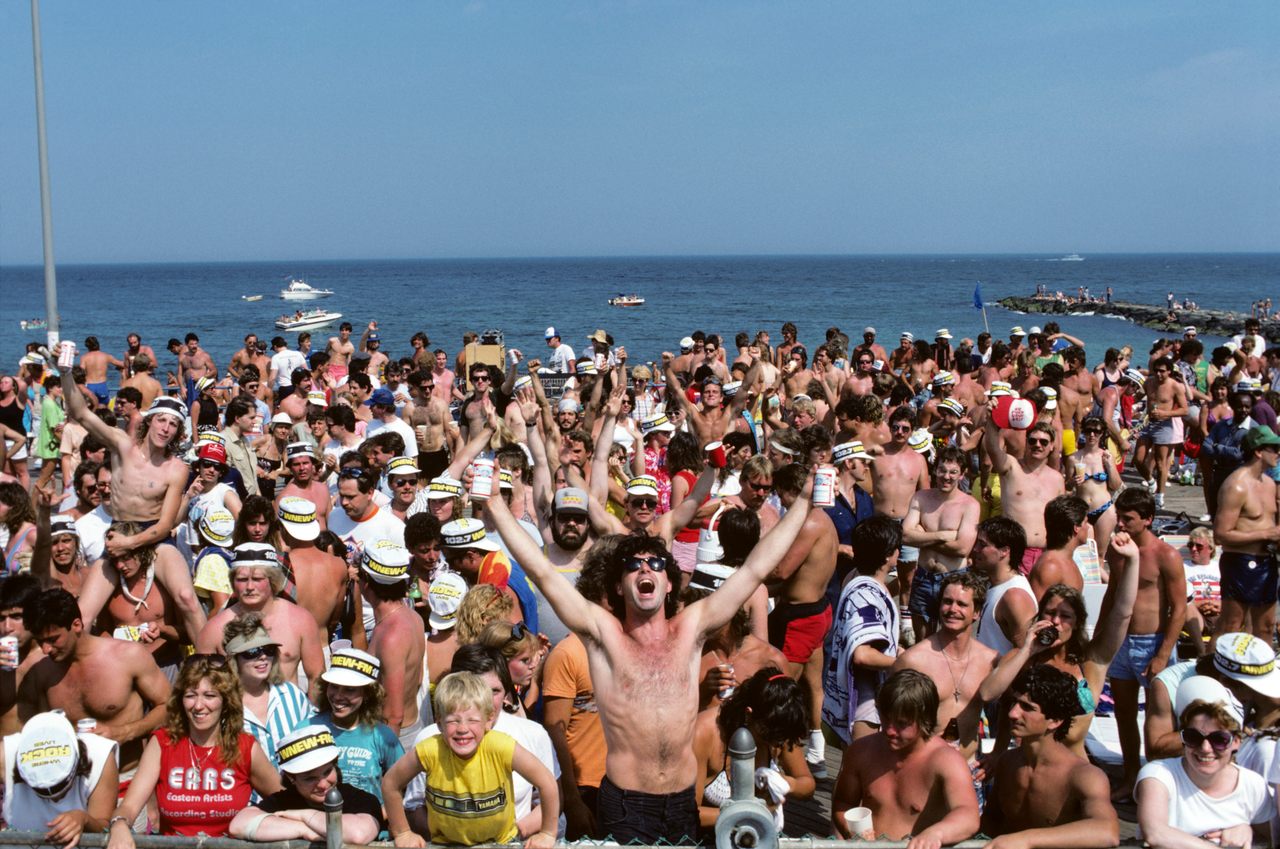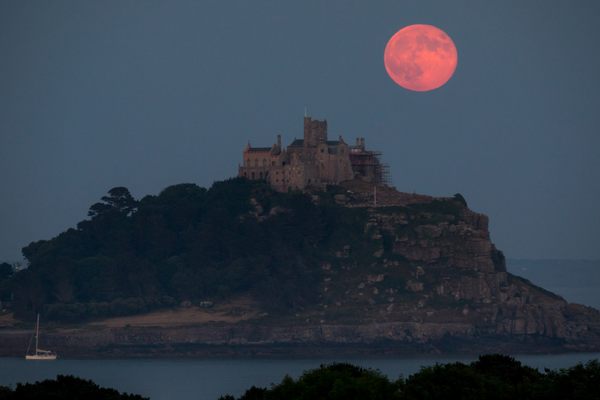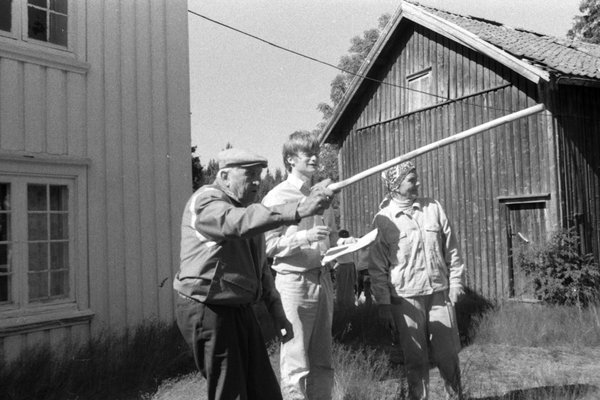Are You a Shoobie or a Benny?
When summer visitors arrive, so do the colorful and sometimes perplexing local nicknames.
Each Memorial Day Weekend in the United States car traffic becomes bumper-to-bumper along New Jersey’s Garden State Parkway, the main access road to the Jersey Shore. In the coastal town of Ocean City, crowds of out-of-towners descend upon the 2.5-mile long boardwalk, tying up coveted parking spaces and congregating outside beloved establishments like Johnson’s Caramel Popcorn and Manco & Manco Pizza. Others stake their spots along OC’s narrow beaches, pitching enormous umbrellas and spreading out their chairs and blankets. There’s no question about it: the season of “shoobies” has begun.
“Shoobies” is the unique name used to describe summer visitors to New Jersey’s southern Atlantic coastline, a stretch of towns that extends from the southern tip of Long Beach Island south to the Victorian resort of Cape May, and includes places like Ocean City and Atlantic City. Like many resort towns and regions, locals felt the need for their own word to describe those who don’t fit in—the day-trippers, tourists, and/or out-of-towners that descend upon them during high-season, filling up hotels, filling up restaurants, and leading to massive backups on the roadways.

The term “shoobies” goes hand-in-hand with the advent of heading ‘down the shore,’ a tradition that first began in the 18th century. In fact, Cape May is known as “America’s first seaside resort,” with visitors from Philadelphia flocking there as early as the mid-1700s. By the late 1800s, railway lines were running from Pennsylvania to Atlantic City, soon followed with the rise of the automobile. But it was sometime between the late 19th century and World War I that the shoobie moniker supposedly found its footing. It was during these years that a special Sunday train ran between Philly and the shore, carrying day-trippers who paid $1 for a round-trip fare, boarded the train in the a.m. with their lunches tucked away in shoe boxes, and then returned home from the beach en masse that evening, sunburnt and awaiting the following week. “They’d eat their lunches down the shore and leave a mess behind,” says Ben Zimmer, a linguist and language columnist for The Wall Street Journal.
By the 1930s, the Atlantic City Press had already begun referring to these tourists as “shoe-boxers” (a 1915 article from Pennsylvania’s Evening Public Ledger calls them the “shoe-box brigade”). The phrase eventually morphed into “shoobies,” which appeared in print as early as 1961.
By then, the phenomenon of shoebox lunches was likely obsolete, and in the year since, like many epithets, the word has taken on wider meanings. “These days can be used for those people who don’t know how to drive, who are too loud, too rude, wear flashy jewelry…,” says Greg Guderian, library associate at the Newark Public Library’s Charles F. Cummings New Jersey Information Center. “Basically, it’s a way of identifying those people who stick out like a sore thumb.”

In Michigan’s Upper Peninsula those people are known as “fudgies” (in reference to the area’s many fudge shops), and throughout New England, the more refined “summer people.” Wisconsin sees the “flatlanders” from Illinois take over its Great Lakes beaches during high season, while the “from-heres,” or residents, along Maryland and Virginia’s Eastern Shore refer to any non-residents as “come-heres.” The “from away” flock to the resort towns in Maine and Newfoundland during high-season, and over in San Diego, Arizonians, or “zonies,” start hitting those California beaches when their own temperatures spike. Anyone not from Alaska is an “outside,” Wyomingites call Coloradans “greenies,” and in Hawaii, pale tourists have earned the nickname “shark bait”. There’s even the fictional “summer dinks,” used as slang for non-islanders in Steven Spielberg’s 1975 classic thriller, Jaws. Although some of these descriptors are more inventive than others, they’re each particular to a specific region and dialect—even when that region is just a town or two over.
Take North and South Jersey. Along New Jersey’s northern Atlantic coast, encompassing places like Asbury Park and Seaside Heights (filming site of the MTV series Jersey Shore), “shoobies” are non-existent. Instead, it’s the “bennies” (or “bennys”) that many local residents see as wreaking havoc on their peaceful towns. This distinct line between north and south is an example of what linguists call an isogloss, the geographical boundary line between regional dialects.
But while most linguists agree that “shoobie” derives from those shoe box lunches (there is one other theory that the name “shoobies” refers to tourists who wear their shoes and socks on the beach, because their feet can’t handle the scorching sands—however it’s just a story that’s been passed on over the years), the origins of “benny” are a bit murkier. According to Zimmer, the term didn’t start appearing in print until the 1970s, more specifically in Robert A. Foster’s Dictionary of American Regional English. Here, Foster theorizes that “benny” stems from Benjamin, a common Jewish name that eventually became a general label for the working-class New Yorkers and North Jerseyans (many of them Jewish) who’d head down the shore on vacation. Zimmer tends to lean toward this explanation as well, since his own great grandparents were a part of this social phenomenon in the early 20th century (“We’ve got pictures and everything,” he says).

Still, other possible theories abound. Some believe “bennies” derives from the people who headed down the shore to soak up its “beneficial rays,” or to many Italian-Americans—or “benes” (the Italian word for “fine”)—who flocked to the shore during the Great Depression. There’s also speculation that “benny” is an acronym for the nearby cities of Bayonne, Elizabeth, Newark, and New York, or maybe Bergen, Essex, Newark, and New York. A few people even believe it stands for “Be Extra Nasty to New Yorkers.”
Librarian Greg Guderian came across one newspaper article where a reporter asked a local shore resident, “Why do you call them bennies?”
The response was simple and straightforward “Because they are,” said the resident.



















Follow us on Twitter to get the latest on the world's hidden wonders.
Like us on Facebook to get the latest on the world's hidden wonders.
Follow us on Twitter Like us on Facebook